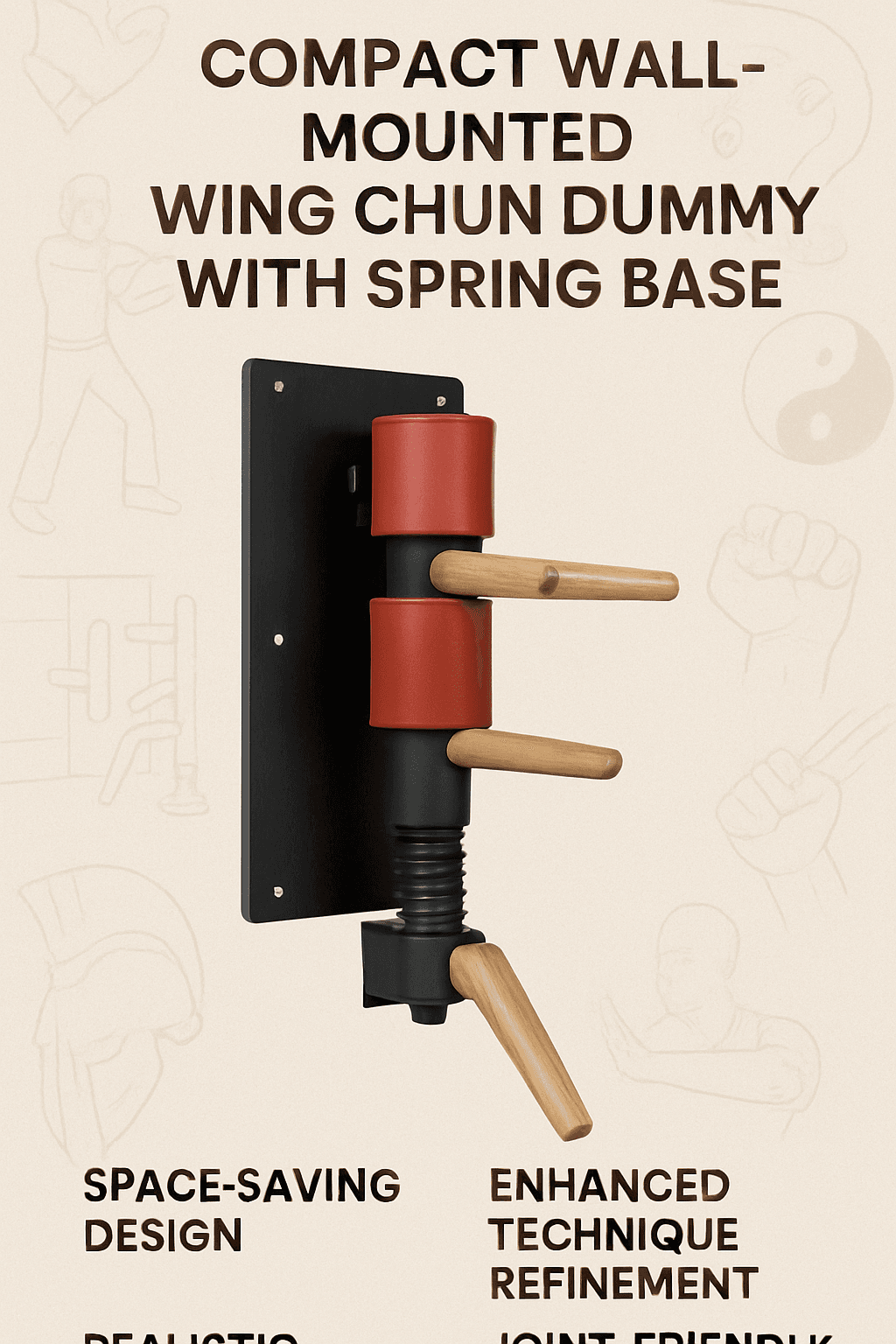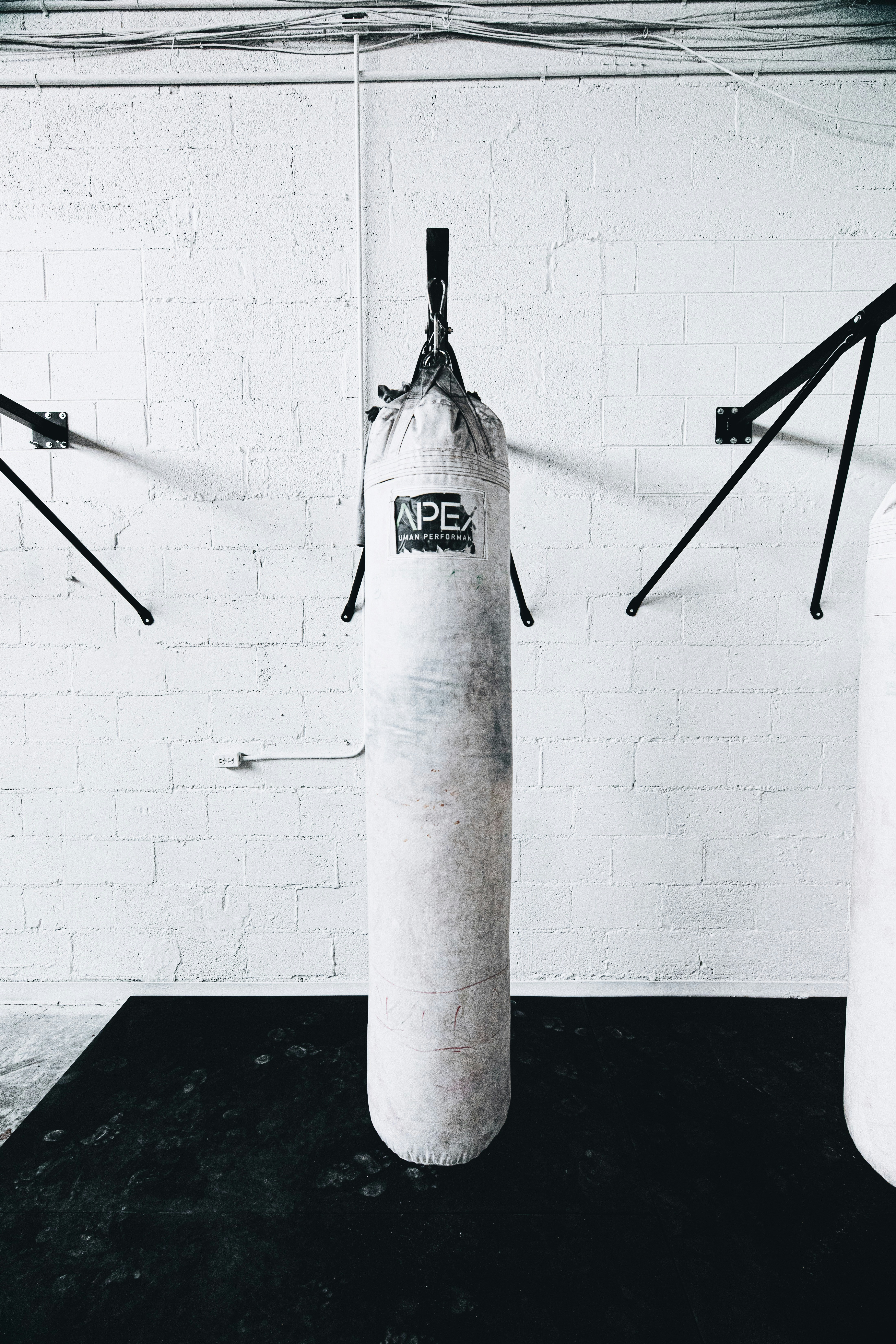As a martial artist, I’ve always been fascinated by the Wing Chun dummy, or Muk Yan Jong – compact wall-mounted wing chun dummy with spring base.
It’s more than just a piece of wood; it’s a silent training partner that helps refine techniques, develop power, and build muscle memory.
However, for many of us, a full-sized, freestanding dummy is simply not an option due to space constraints.
That’s where the compact wall-mounted Wing Chun dummy with a spring base comes into play.
This innovative design offers a practical and effective solution for practitioners looking to elevate their training without sacrificing precious floor space.

Videos are added random thoughts
Why Choose a Compact Wall-Mounted Dummy with a Spring Base?
When I first considered a Wing Chun dummy for my home, the sheer size of traditional models was a major deterrent.
But then I discovered the wall-mounted versions, and specifically those with a spring base.
This design is a game-changer for urban martial artists or anyone with limited training space.
It offers the core benefits of a traditional dummy while being incredibly space-efficient.
One of the most significant advantages is the space-saving design.
Unlike freestanding dummies that demand a dedicated area, a wall-mounted dummy can be installed in a garage, a spare room, or even a sturdy hallway.
This means you can transform almost any wall into a functional training zone, making consistent practice much more accessible [1].
Beyond just saving space, the spring base introduces a dynamic element to your training.
Traditional dummies are rigid, providing immediate feedback on impact.
While valuable, the spring base mimics the give and take of a real opponent, allowing for a more fluid and realistic training experience.
It absorbs some of the impact, reducing stress on your joints, and provides a slight recoil, which is excellent for developing continuous flow and sensitivity in your techniques [2].
This dynamic feedback helps you learn to adapt to an opponent’s movement, rather than just hitting a static target.
Furthermore, these dummies are often designed for easy installation and portability.
Many models come with simple mounting instructions, and some even feature suction cups for temporary setups, as seen in some of the product images [Image 5].
This flexibility means you can set up your training station when you need it and even take it down if you need the space for other activities.
It’s about making your training fit your life, not the other way around.
Key Features to Look for in Your Compact Wing Chun Dummy
When I was researching my own dummy, I quickly realized that not all wall-mounted dummies are created equal.
There are several key features that differentiate a good training tool from a great one.
Understanding these can help you make an informed decision and get the most out of your investment.
First and foremost, consider the material and construction.
A durable dummy is essential.
Many high-quality wall-mounted dummies are crafted from solid wood, offering the authentic feel and resilience needed for rigorous training.
However, some modern versions utilize robust iron frames with rubber foam padding,
which can be equally effective and sometimes more forgiving on the hands and shins, especially for beginners [Image 3, 5].
The arms and leg should be sturdy and securely attached, often with built-in springs to provide that crucial recoil [Image 3, 8].
Next, pay attention to the spring mechanism.
This is what truly sets these dummies apart.
A well-designed spring base or spring-loaded arms will provide realistic feedback, mimicking the dynamic resistance of an opponent.
Some systems use tension bands attached to a swivel base to maintain centerline tension, ensuring the dummy always faces forward and provides consistent resistance [3].
This allows you to practice continuous attacks and develop sensitivity to an opponent’s shifting weight and balance.
Adjustability is another critical feature.
Look for dummies that allow you to adjust the height of the arms and leg.
This ensures that the dummy can be customized to your specific height and training needs, making it suitable for multiple users or for adapting to different Wing Chun forms and techniques. Some models offer simple adjustment switches for quick changes [Image 3].
Finally, consider the mounting system.
Since it’s wall-mounted, the stability of the installation is paramount.
Most come with robust brackets and expansion screws for secure attachment to a sturdy wall [Image 3].
Some innovative designs even offer suction cup hand stakes for temporary, non-damaging installation,
which can be a great option for renters or those who need maximum flexibility [Image 5].
Integrating the Compact Dummy into Your Wing Chun Training
Having a compact wall-mounted Wing Chun dummy with a spring base is just the first step; the real magic happens when you integrate it effectively into your training regimen.
I’ve found that consistency and a structured approach are key to maximizing its benefits.
One of the primary uses of the dummy is to refine your forms and techniques.
The dummy provides a tangible opponent to practice your Siu Lim Tao, Chum Kiu, and Biu Jee forms.
The spring base, in particular, helps in developing ‘sticky hands’ (Chi Sao) concepts, as it offers a dynamic resistance that encourages continuous pressure and sensitivity.
You can practice your pak sao, lap sao, and other trapping hands, feeling the recoil and learning to adapt your force accordingly.
Beyond forms, the dummy is excellent for developing power and precision.
Each strike, block, and parry against the dummy helps to condition your limbs and improve your structural integrity.
The goal isn’t just to hit hard, but to hit with correct body mechanics, generating power from your stance and core.
The spring base will give you immediate feedback on whether your force is continuous or if you’re just hitting a dead object.
This feedback loop is invaluable for self-correction and improvement.
It’s also a fantastic tool for footwork and angle training.
Even though it’s wall-mounted, you can still practice moving around the dummy, attacking from different angles, and maintaining your centerline.
Imagine the dummy as the center of a clock face, and you’re constantly moving to different numbers, delivering strikes and blocks.
This helps in developing fluid movement and understanding how to control distance and position in a fight.
Finally, don’t underestimate its role in mental conditioning and focus.
Training with the dummy requires intense concentration.
It’s a meditative process where you’re fully present, focusing on every movement, every breath, and every impact.
This mental discipline translates directly into improved focus and calmness in real-life situations, both inside and outside of martial arts.
It’s a chance to clear your mind and immerse yourself in the art [4].
My Personal Takeaway: A Must-Have for the Modern Practitioner
For anyone serious about their Wing Chun practice, but constrained by space, the compact wall-mounted dummy with a spring base is an absolute game-changer.
It’s not just a compromise; it’s an evolution of a classic training tool, adapted for the modern martial artist.
It allows for consistent, effective training, helping to hone techniques, build power, and develop the crucial sensitivity needed in Wing Chun.
I’ve personally experienced the benefits of integrating this type of dummy into my routine.
The ability to train anytime, without needing to travel to a gym or clear out a large space, has been invaluable.
The dynamic feedback from the spring base has pushed my understanding of continuous force and flow to new levels.
If you’re on the fence, I wholeheartedly recommend exploring this option.
It’s an investment in your martial arts journey that will pay dividends in skill, confidence, and physical conditioning.
References
[1] [Wing Chun Dummy Blog – Intro, Use & Benefits]
[3] [Wing Chun Dummys – Dummy with Recoil Reaction Stand (wall mounted)]
[4] [Enter Shaolin – 3 Benefits When You Use A Wing Chun Muk Jong]



